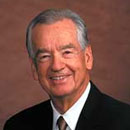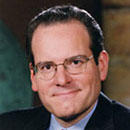For Alaska Flight 1282 passengers, terror of blowout is slow to fade
Published in Business News
Soon after Kendra Frome’s plane landed — no incidents and all parts intact, this time — her 3-year-old daughter turned to her with panicked eyes.
Amid the shuffle of unsuspecting travelers crowding into the aisles, the girl asked her mom if they were on a Boeing plane. Yes, the mother of three replied.
Then another question: “Did the plane break?”
Eavesdropping passengers might have dismissed the little girl’s question, chalking it up to a child’s babble from something she overheard on TV news. They couldn’t know she had been on a “broken” plane: Alaska Airlines Flight 1282, on Jan. 5, 2024.
Twenty minutes into that flight to Ontario, California, a panel had blown out of the 737 Max 9 as it climbed out of Portland, Oregon. Pressurized cabin air had rushed through a gaping hole in the plane at 16,000 feet, 1,600 feet higher than Mount Rainier. Had they been at cruising altitude around 30,000 to 40,000 feet, the results could have been catastrophic, with passengers losing consciousness within seconds.
The blowout began one of Boeing’s most turbulent years, one that included an ongoing criminal probe, federal investigations, a limit on 737 Max production, a CEO retirement and a Machinists strike.
And a little girl’s fear.
Frome’s daughter has asked the same questions each time her family flies: Is this a Boeing plane, and is this one going to break?
“In addition to dealing with my own nervousness and anxiety of getting on a plane, I have to also help” my children, Frome said. “For several days leading up, I say, ‘It’s going to be OK. We’re going to be OK. It’s a different type of plane. It’s not the same plane that broke.’”
In an industry that touts statistics demonstrating that air travel is overwhelmingly safe, Frome, her children and the 167 other Alaska Flight 1282 passengers are statistical anomalies — the rare examples of what can go terribly wrong when usually everything goes right.
On one hand, as the “Alaska passengers,” they’re in the middle of a massive fallout — lawsuits, federal investigations, intense media interest. On the other, as traumatized individuals, many have been hesitant to tell their stories and, paradoxically, feel like the world has moved on. While millions laughed at a “Saturday Night Live” skit parodying a post-blowout Alaska commercial — “Alaska Airlines: You didn’t die, and you got a cool story” — the Alaska passengers struggle when sirens blare or planes pass overhead.
“A thousand stories come and go, and the American memory moves on,” said Mike Simental, who was sitting two rows in front of the blowout with his wife and two teenage children. “It’s still very much a thing that we navigate daily.”
Passengers relive the moment
The wait and boarding for the daily flight from Portland to Ontario is uneventful. Simental’s family, on their way to his grandmother’s 90th birthday party, sits in the terminal across from a group of teenage boys. Simental, a high school administrator, clocks that they have sports equipment and assumes they are lacrosse players.
The plane is nearly full but not sold out. Some seats are empty, including, crucially, seats 26A and 26B.
On the plane, Frome buckles in her 3- and 5-year-old girls and tries to calm her fussy 1-year-old son, who’s been sick and is sitting on her lap in seat 19D. They’re heading home after visiting family in Oregon. As the plane takes off over Portland, Frome watches her girls take out their tablets and distracts her son with a suction-cup toy, settling in for the 2-hour, 20-minute flight.
In seat 24D, Simental looks across the aisle at his wife and kids, noting how they seem calm just sitting in their seats. Content. He puts in his AirPods and relaxes.
Then a hiss. Then a boom.
A panel next to row 26 that left Boeing’s Renton, Washington, factory missing four retaining bolts blows out of the plane. It is a contained explosion. Gusts of sucking wind follow as oxygen masks flop down. Terror, confusion, an inexplicable serenity.
The pressure sucks Simental’s AirPod out of his ear. Frome’s vision clouds. A flight attendant feels like her makeup is melting from heat.
Oh, we’re on one of those flights where everybody dies, Simental thinks.
Frome puts masks on her two girls and tightens their seat belts. Realizing how dizzy she feels, she puts on her own. She starts to panic as she tries to get a mask over her wiggling 1-year-old. Every movement is a struggle with the 30-pound baby; she pins him between her legs to hold him still. She wonders how she would be able to do this for the rest of the flight.
She hears a flight attendant tell two women to go back to their seats. We can’t, they say. They’re right by the hole.
Simental looks back and sees a woman with her arms wrapped around a teenage boy. He recognizes the boy from the terminal.
The 15-year-old’s window seat is directly in front of the blowout, and he is jerked upward toward the hole as his mother holds onto him. His mom keeps mouthing “I can’t lose him, I can’t lose him,” according to Simental.
For some reason — Simental says in any other circumstance he would have talked himself out of this — Simental takes off his mask and unbuckles his seat belt, walks back to the boy and his mother and helps him get to the middle seat in the row ahead of him.
Back in his seat, Simental prays without stopping. Frome writes a text message to her husband, home in California, that there is a hole in the plane. Her son continues to fight her as she wrestles the oxygen mask over his mouth.
The plane dips under the clouds, and passengers see city lights, though Simental isn’t sure where they are. Medford? Eugene? The pilots are returning to Portland. One is without a headset— it had been sucked out when the cockpit door flew open from the decompression — and they fear they’ve lost passengers.
The plane lands and a medical team comes on board. Dignified cries turn into uncontrollable weeping.
Reflections and fear
Physically, they were all on the ground and safe. Mentally, they remained on the plane.
Simental and his family headed back home, climbed into bed and watched mind-numbing television shows together.
In shock, Frome opted to take another flight home to Southern California — her daughters’ stuffed Pluto and favorite blankets were in their checked baggage and they wouldn’t get the bags that night. While they waited in Portland, Frome’s mom drove to be with them and bought the girls dog stuffies at an airport gift shop.
On that flight, they sat by the bathrooms. Every time a toilet flushed, both girls would look at their mom in fear. If they had waited another day, Frome’s not sure they would have been able to get back on a plane.
Her text to her husband never went through. She’s grateful for that now; she’s not sure how it would have affected him if he had seen it at the moment. Later, she showed him the unsent message.
“I think that’s when it hit him, that he could have lost his whole family,” she said.
The media swarmed as details came out pointing to Boeing’s fault in the uninstalled bolts. An investigation finds that two distinct manufacturing errors by different crews at Boeing’s Renton factory caused the blowout.
“We deeply regret this accident,” Boeing said in a statement this week, adding that the company continues “to work on strengthening safety and quality across our operations.”
Simental and Frome are both part of a class-action lawsuit filed against Boeing, one of several legal actions that followed the incident.
“We deeply regret this accident,” Boeing said in a statement this week, adding that the company continues “to work on strengthening safety and quality across our operations.”
Frome injured her back when she held her son. For two months, the injury denied her an outlet for stress key to her mental health. She’s returned to running and has been gaining her strength back over the past year, but the mental triggers persist.
She keeps the windows up in the car because she doesn’t like the feeling of rushing air. She sleeps poorly, though meeting with a counselor and talking with her daughters about what they went through has helped. They’re more sensitive to loud noises. She worries about scenarios where her kids could get hurt or die.
“I didn’t think about that as often before,” she said. “But now I think about it a lot more because they have been put in danger. Those are the kinds of things that I didn’t think would happen. But they have.”
“It’s still something that affects us, and probably will for a while.”
Simental felt a newfound sense of gratitude and a deeper understanding of how valuable his family is to him. He couldn’t control what happened on the plane, but he realized he can control other parts of his life, like what he eats or how he exercises. What he does now, in his 40s, might impact the way his joints feel or his heart reacts when he’s in his 50s and 60s.
“I don’t have full control of everything that happens in my life, but I do have a significant amount of control to take the steps necessary to ensure that I have as many years as possible with my family,” he said.
Simental, Frome and their families still fly, but it’s not the same.
Frome’s now 4-year-old still asks about the Boeing planes breaking. They try to book flights on non-Boeing planes if they can. Frome will only fly with the three kids if her husband is with her.
But she doesn’t want her children to be scared, and reassures them that what they went through will never happen again. Sometimes we need to do hard things, she tells them.
The Simentals never made it to Universal Studios, a side trip they planned to tack on to their California vacation. A trip to Japan has dropped out of conversations. The family now flies out of necessity, not enjoyment.
They’ll get on the plane. But the Simental family will never sit in a window seat again.
©2025 The Seattle Times. Visit seattletimes.com. Distributed by Tribune Content Agency, LLC.

















Comments